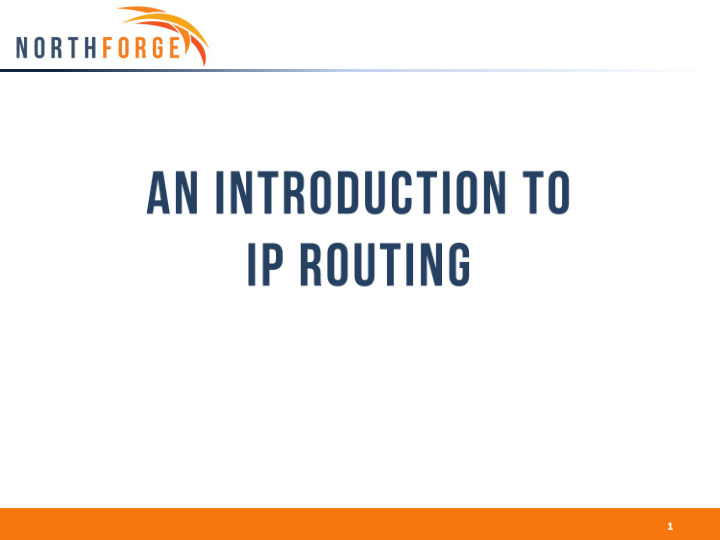



1
Layers • bridges, switches and routers IP Service Model • Provided to transport layer Global namespace, host to host connectivity, best effort packet delivery • Not include: Delivery guarantees on bandwidth, delay or loss IP Addressing • Class vs. Classless • IPv4 vs. IPv6 IP Forwarding vs Ethernet Switching Continued… 2
…Continued Distance Vector vs. Link State Routing • With distance vector routing, each node has information only about the next hop • In link state routing, each node has a complete map of the topology Autonomous System, Gateway Router • Inter-AS vs. intra-AS routings 3
Ethernet Autonomous Ethernet System 1 Router Router Ethernet Router Ethernet Router Autonomous Ethernet System 2 Router Ethernet Router 4
Also known as Interior Gateway Protocols (IGP) Most common Intra-AS routing protocols: • RIP: Routing Information Protocol • OSPF: Open Shortest Path First • iBGP: Interior Border Gateway Routing Protocol • MANET : OLSR, 5449, 5614: Mobile Ad-hoc NET work protocols 5
Provides authentication of routing messages Enables load balancing by allowing traffic to be split evenly across routes with equal cost T ype-of-Service routing allows to setup different routes dependent on the TOS field Supports sub-netting Supports multicasting Allows hierarchical routing 6
BGP (Border Gateway Protocol) BGP provides each AS a means to: • Obtain prefix reachability information from neighboring ASs. • Propagate the reachability information to all routers internal to the AS. • Determine “ good” routes to subnets based on reachability information and policy. Allows an AS to advertise its existence to the rest • BGP is neither a link state, nor a distance vector protocol. Routing messages in BGP contain complete routes. • Network administrators can specify routing policies 7
BGP’s goal is to find any path (not an optimal one ). • BGP selects the path with the shortest number of Ases in its path • Since the internals of the AS are never revealed, finding an optimal path is not feasible. For each autonomous system (AS), BGP distinguishes: local traffic: traffic with source or destination in AS transit traffic: traffic that passes through the AS Stub AS: has connection to only one AS, only carry local traffic Multi-homed AS: has connection to >1 AS, but does not carry transit traffic T ransit AS: has connection to >1 AS and carries transit traffic 8
Policy: • Inter-AS: admin wants control over how its traffic routed, who routes through its network • Intra-AS: single admin, so no policy decisions needed Scale: • hierarchical routing saves table size, reduced update traffic Performance: • Intra-AS: can focus on performance • Inter-AS: policy may dominate over performance 9
RFCs 10
Recommend
More recommend